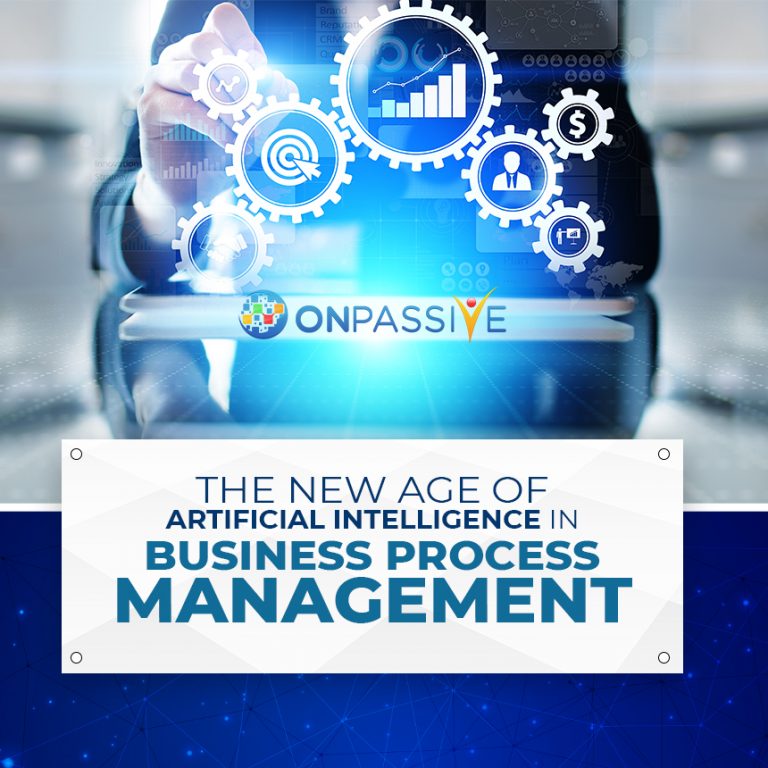
Artificial Intelligence is a hot cake in the latest trends and technology. Each enterprise is so valued and precious at its stock and is showing its path to bind its rule to not only stay relevant but also achieve a competitive edge. Because of this reason, it’s not surprised that over 37% of businesses have embraced or planning to adopt Business Process Management systems in its processes.
AI-driven technologies are altering the way organization’s behavior.
Once centered with the priority of cost-cutting and process efficiency, modern BPM systems are more targeted that provides the utmost user confronts.
For example, instead of penetrating to reactive analytics, AI’s cognitive systems offer proactive and predictive analytics. That way, it helps improve not only performance efficiency and effectiveness but also insights that managers can use for decision-making.
BPM and AI deliver targeting efficiency
Today, many acknowledgements have made in the advancements of technology, and business process-based applications are getting more refined.
While the new developments might be good news, the pronounced effect of blocked processes or time delays still questions most of the business.
But, the recent developments in AI are making it possible for businesses to predict prospects and plan. Besides that, it has become easier to line up future constraints with resources.
As a result, avoiding such obstructions in the forthcoming.
AI junctures for Business Process Management
In addition to this, the other mapping of AI that affects BPM surrounded by machine learning.
It gives AI engines ability to assess the efficiencies of the automated processes in the business and possibly offers recommendations.
Based on these such recommendations, businesses can modify business such as
a) Process
b) Logic
c) Finally targeting performance.
How is AI affecting the business processes?
Using AI-based BPM systems provides better process-flow pattern detection and business metrics predictions. It also helps provide corrective actions. Here are some of how AI is revolutionizing and how a business manages its functions:
Machine learning – from input to future
These algorithms will assist business owners, managers and the employees have ease of solving problems that they occur when describing properties for input data that determine the expected output.
For example, using search algorithm and deep hybrid learning, researchers were able to master the game of Go, which one of the most complex with more changes than the number of atoms in the world.
On the same side, machine learning-based BPMs can quickly detect patterns that are not easily checked by human managers. It can detect these patterns successfully, which can be employed in BPM to spot deviating behavior.
For example, credit-card frauds or segment data for particular services, like segmenting opportunities for marketing plans.
These procedures also offer the flexibility you need to apply when changing data. As a result, increased the flexibility of business processes shows possibilities and adjust the assessing in case of alterations of situations.
From future to resolutions
This results in AI-based resolutions in theoretic models are responsible for decisions that are taken within a business process. For example, you can use these models to decide whether you want to recommend to a user to buy, sell products, stocks, so on.
For example, think about the difficulties encounters while making each marketing resolutions.
It needs to map out the ever-changing customer needs and line up their services or products to these needs. In addition to this, your knowledge of the evolving customer behavior is a crucial tool you need to come up with both short and long-term marketing strategy.
AI-based BPM provides you with modelling and simulation techniques that offer you reliable insight into consumer behavior (in real-time) and predict future consumption trends.
Search algorithms – from a resolution to activities
The increased strength of AI has started many BPM vendors to design many search algorithms that have added to powerful problem-solving and optimization strategies.
Based on these tactics, vendors may come up with a discrete model defined by a set of states and actions.
With a well-defined state and action, businesses can easily define the search space. This defined statement will become the nodes of the underlying graph, and the actions shown are the possible transitions between the edges of your graph, which are noted by all the corners.
Advancements in AI has led to the birth of state-based search algorithms. These models can be applied in many powerful discontinuous modelling tactics to optimally solvation process, planning and a slew of other related problems experienced in business process management.
Conclusion
AI-embedded BPM solutions offer the business with an opportunity to differentiate among themselves in this contention.
Enterprises can cut across the usual output results to stop obstructions which result in achieving a high level of performance.
Today, this AI is no longer perceived as the end, but only a means to effectiveness and efficiency.
Various businesses from both small and large will slowly realize the importance of adopting AI-based BPM software to reach optimization and flexibility of business processes.


